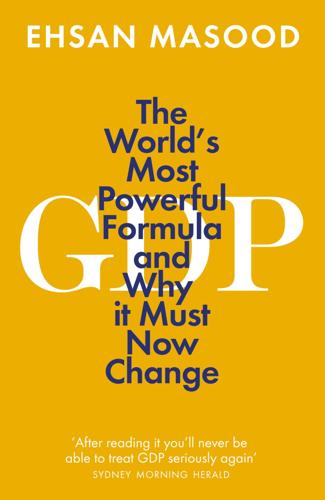
GDP: The World’s Most Powerful Formula and Why It Must Now Change
by
Ehsan Masood
Published 4 Mar 2021
David Halberstam, The Best and the Brightest (New York: Ballantyne Books, 1992; originally published 1969). Khadija Haq and Richard Ponzio, Pioneering the Human Development Revolution: An Intellectual Biography of Mahbub ul Haq (New Delhi: Oxford University Press, 2008). Mahbub ul Haq, The Strategy of Economic Planning: Case Study of Pakistan (Oxford: Oxford University Press, 1966). Mahbub ul Haq, The Poverty Curtain: Choices for the Third World (New York: Columbia University Press, 1976). Mahbub ul Haq, Reflections on Human Development (New York: Oxford University Press, 1995). John P. Hardt and Vladimir G. Treml, Soviet Economic Statistics (Durham, NC: Duke University Press, 1972).
…
Sir Richard Jolly, email communication with the author, November 30, and December 2, 2015. In a separate email dated December 4, 2015, Bill Draper also confirmed the lunch with Mahbub ul Haq and General Zia on August 17, 1988, the day of Zia’s death. 5. Bill Draper, telephone interview with the author, May 2013. 6. Mahbub ul Haq, “The Birth of the Human Development Index,” in Reflections on Human Development (New York: Oxford University Press, 1995), 46. 7. Bill Draper also tells his story of meeting Mahbub ul Haq and publishing the Human Development Index in his memoir, William H. Draper III, The Startup Game: Inside the Partnership Between Venture Capitalists and Entrepreneurs (New York: Palgrave Macmillan, 2011), 121. 8.
…
Haq, Strategy of Economic Planning, 1. 19. Ibid., 174, 181. 20. Economy of Pakistan, 119. 21. Though delivered without a text, the speech was later published as Mahbub ul Haq, “A Critical Review of the Third Five Year Plan,” Management and National Growth: Proceedings of the Management Convention Held at Karachi (Karachi: West Pakistan Management Association, April 24–25, 1968), 23–33. 22. Khadija Haq was the author of the work on which Mahbub ul Haq’s data was based and he credited her in his speech to the West Pakistan Management Association though perhaps a little ungenerously. He said: “Since my wife was associated with some of these studies, I hope this does not make them less reliable!”

The Weightless World: Strategies for Managing the Digital Economy
by
Diane Coyle
Published 29 Oct 1998
Prime exponents of the wrong-headed approach are Paul Hirst and Graham Thomson, Globalisation in Question. Libération, 14 August 1996. Financial Times, London, 22 October 1996. An Evaluation of the Tobin Tax, Paper presented by Philip Arestis and Malcolm Sawyer at the London Business School, September 1996. For a rehearsal of all the arguments, see The Tobin Tax, ed. Mahbub ul Haq et al., 1996. See The Independent, London, 2 September 1996. Auerbach et al. in Tax Policy and the Economy, ed. Summers and Bradford. Making Democracy Work, Princeton University Press 1993. Printed in Managing the World Economy, ed. Peter Kenen. In Kenen, op cit. In The Virtual Community. Chapter Nine.
…
Paul Gregg, ed. (1997) Jobs, Wages and Poverty, Centre for Economic Performance, London School of Economics, London. Lawrence Grossman (1995) The Electronic Republic, Penguin, London. Ben Hamper (1992) Rivethead, Fourth Estate, London. Charles Handy (1989) The Age of Unreason, Arrow Business Books, London. Charles Handy (1994) The Empty Raincoat, Hutchinson, London. Mahbub ul Haq, ed. (1996) The Tobin Tax, Oxford University Press, Oxford. Nigel Harris (1996) The New Untouchables, I.B. Tauris, London. Paul Harrison, (1983) Inside the Inner City, Pelican, London. David Harvey (1996) Justice, Nature and the Geography of Difference, Blackwell, Oxford. John Heilemann (March 1996) ‘The new economy, stupid’, Wired magazine, San Francisco, CA.

Irrational Exuberance: With a New Preface by the Author
by
Robert J. Shiller
Published 15 Feb 2000
.: Princeton University Press, 1974); James Tobin, “A Proposal for International Monetary Reform,” Eastern Economic Journal, 4 (1978): 153–59; and Barry Eichengreen, James Tobin, and Charles Wyplosz, “Two Cases for Sand in the Wheels of International Finance,” Economic Journal, 105 (1995): 162–72. Mahbub ul Haq, Inge Kaul, and Isabelle Grunberg have edited a volume (The Tobin Tax: Coping with Financial Volatility [New York: Oxford University Press, 1996]) of papers commenting on the Tobin proposal. 23. Lawrence H. Summers and Victoria P. Summers, “When Financial Markets Work Too Well: A Cautious Case for a Securities Transactions Tax,” Journal of Financial Services Research, 3(2–3) (1988): 163–88. 24.
…
Foot, David K., and Daniel Stoffman. Boom, Bust & Echo: How to Profit from the Coming Demographic Shift. Toronto: McFarlane, Walter & Ross, 1996. Frankel, Jeffrey. On Exchange Rates. Cambridge, Mass.: MIT Press, 1993. ———. “How Well Do Foreign Exchange Markets Work: Might a Tobin Tax Help?” in Mahbub ul Haq, Inge Kaul, and Isabelle Grunberg (eds.), The Tobin Tax: Coping with Financial Volatility. New York: Oxford University Press, 1996, pp. 41–81. French, Kenneth R., and Richard Roll. “Stock Return Variances: The Arrival of Information and the Reaction of Traders.” Journal of Financial Economics, 17 (1986): 5–26.
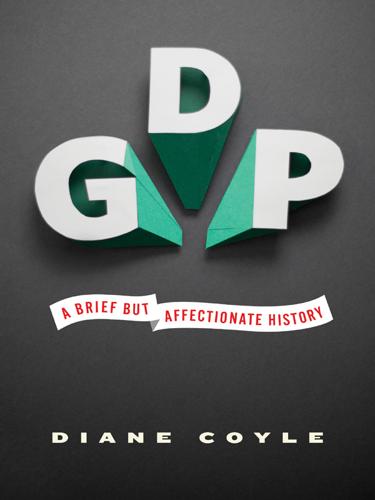
GDP: A Brief but Affectionate History
by
Diane Coyle
Published 23 Feb 2014
It is a thankless task to try to estimate the total amount of development aid paid by the taxpayers of rich countries to the governments of poor countries, but the figure would be in the trillions of dollars. The amount donated privately through international nongovernmental organizations dedicated to fighting poverty is another large figure. Yet GDP has not grown much for most of the postwar era in sub-Saharan Africa, and poverty remains widespread. Mahbub Ul Haq, a Pakistani economist working at the World Bank in the 1970s and 1980s, and later (after a stint as Pakistan’s finance minister) at the United Nations, introduced an alternative approach to measuring poverty and welfare. The indicator he launched, the Human Development Index (HDI), built on the idea of measuring capabilities rather than income.
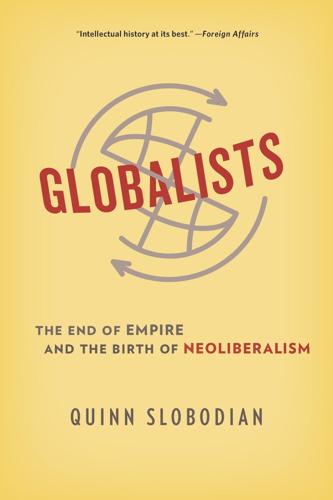
Globalists
by
Quinn Slobodian
Published 16 Mar 2018
Developing nations, organized as the Group of 77 (G-77), over the course of the 1960s grew from being less than half of the contracting members to the General Agreement on Tariffs and Trade (GATT) to being over two-thirds.1 Neither a seat in the UN nor a voice in GATT equaled automatic power. Yet national independence made new political strategies possible. Emboldened by the “commodity power” flexed by the Arab oil-producing countries in the oil embargo of 1973–1974, Global South nations came together in what economist Mahbub ul Haq called in 1976 a “trade union of the poor nations.”2 They wielded state sovereignty “as a shield and a sword,” using the forum of the UN General Assembly to pass resolutions on a “New International Economic Order” (NIEO) and a “Charter of the Economic Rights and Duties of States” in 1974, demanding redistributive justice, colonial reparations, permanent sovereignty over natural resources, stabilization of commodity prices, increased aid, and greater regulation of transnational corporations.3 Neoliberal thinkers saw the European Economic Community’s (EEC) “Eurafrican” trade preferences for postcolonial nations as evidence that colonialism had not ended cleanly.
…
Mennes and Jacob Kol (London: Croom Helm, 1988), 45. 218. Gerard Curzon and Victoria Curzon Price, Global Assault on Non-tariff Trade Barriers (London: Trade Policy Research Centre, 1972), 3. 7. A WORLD OF SIGNALS 1. Robert E. Hudec, Developing Countries in the GATT / WTO Legal System, rev. ed. (London: Rowman and Littlefield, 2007), 31. 2. Mahbub ul Haq, The Poverty Curtain: Choices for the Third World (New York: Columbia University Press, 1976), 169. 3. Balakrishnan Rajagopal, International Law from Below: Development, Social Movements and Third World Resistance (New York: Cambridge University Press, 2003), 79, 82. For the earlier UN history of the demand for permanent sovereignty over natural resources, see Nico Schrijver, Sovereignty over Natural Resources: Balancing Rights and Duties (New York: Cambridge University Press, 1997), chaps. 1–3.
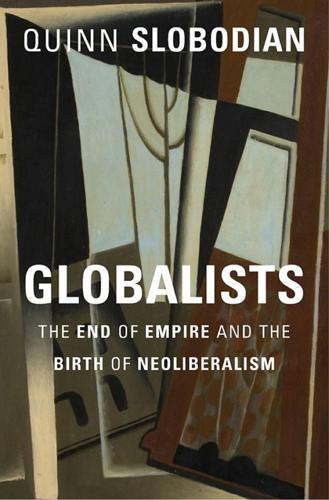
Globalists: The End of Empire and the Birth of Neoliberalism
by
Quinn Slobodian
Published 16 Mar 2018
Developing nations, organized as the Group of 77 (G-77), over the course of the 1960s grew from being less than half of the contracting members to the General Agreement on Tariffs and Trade (GATT) to being over two-thirds.1 Neither a seat in the UN nor a voice in GATT equaled automatic power. Yet national independence made new political strategies pos sible. Emboldened by the “commodity power” flexed by the Arab oil- A W o r l d of S ig n als 219 producing countries in the oil embargo of 1973–1974, Global South nations came together in what economist Mahbub ul Haq called in 1976 a “trade union of the poor nations.”2 They wielded state sovereignty “as a shield and a sword,” using the forum of the UN General Assembly to pass resolutions on a “New International Economic Order” (NIEO) and a “Charter of the Economic Rights and Duties of States” in 1974, demanding redistributive justice, colonial reparations, permanent sovereignty over natural resources, stabilization of commodity prices, increased aid, and greater regulation of transnational corporations.3 Neoliberal thinkers saw the European Economic Community’s (EEC) “Eurafrican” trade preferences for postcolonial nations as evidence that colonialism had not ended cleanly.
…
Gerard Curzon and Victoria Curzon Price, Global Assault on Non-tariff Trade Barriers (London: Trade Policy Research Centre, 1972), 3. 7. A WORLD OF SIGNALS 1. Robert E. Hudec, Developing Countries in the GATT / WTO Legal System, rev. ed. (London: Rowman and Littlefield, 2007), 31. NOTES TO PAGES 219–221 345 2. Mahbub ul Haq, The Poverty Curtain: Choices for the Third World (New York: Columbia University Press, 1976), 169. 3. Balakrishnan Rajagopal, International Law from Below: Development, Social Movements and Third World Resistance (New York: Cambridge University Press, 2003), 79, 82. For the earlier UN history of the demand for permanent sovereignty over natural resources, see Nico Schrijver, Sovereignty over Natural Resources: Balancing Rights and Duties (New York: Cambridge University Press, 1997), chaps. 1–3.
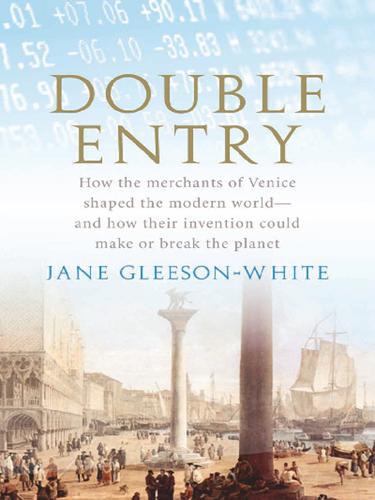
Double Entry: How the Merchants of Venice Shaped the Modern World - and How Their Invention Could Make or Break the Planet
by
Jane Gleeson-White
Published 14 May 2011
Or, as Gertner puts it, in a green accounting context, ‘a heightened focus on environmental indicators, for starters, could give environmental legislation far greater urgency’. Amartya Sen has arrived at a similarly pragmatic view. Sen’s involvement with alternate approaches to national accounting goes back to 1990, when he formulated the Human Development Index (HDI) with friend and colleague Mahbub ul Haq. The HDI incorporates into a nation’s accounts GDP modified by education and health. Sen and Haq met at Cambridge University in 1953, where they found they shared an interest in national development and agreed that it was wrong to equate development with economic growth. Haq began to consider measures other than the GDP, mostly in health and education, which he believed might lead to government policies that would massively improve life in countries like his native Pakistan even without large increases in the GDP.
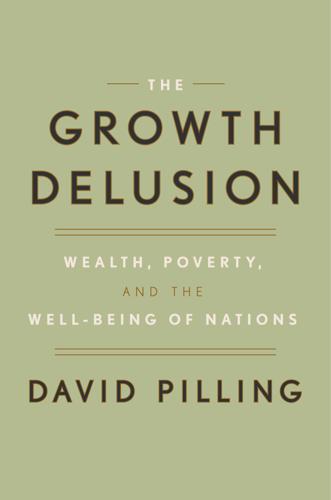
The Growth Delusion: Wealth, Poverty, and the Well-Being of Nations
by
David Pilling
Published 30 Jan 2018
The man who came up with the Scandinavian put-down is Bryan Caplan, a professor of economics at George Mason University in Virginia. He was having a go not at the twenty-six-component GPI, but at the far simpler three-component Human Development Index. The HDI was one of the first serious attempts to invent an alternative to GDP. It is the brainchild of Pakistani development economist Mahbub ul Haq, who once wrote of GDP, “Any measure that values a gun several hundred times more than a bottle of milk is bound to raise serious questions about its relevance to human progress.” Haq’s index, drawn up in conjunction with Amartya Sen, was launched in 1990. It was simplicity itself, combining three elements: income, literacy, and longevity.
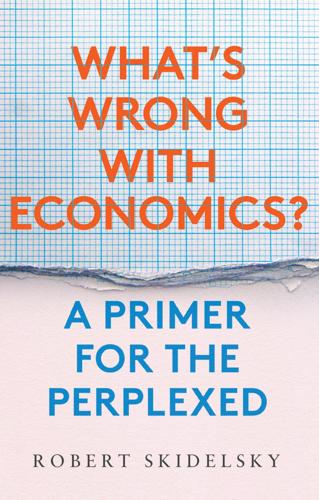
What's Wrong With Economics: A Primer for the Perplexed
by
Robert Skidelsky
Published 3 Mar 2020
Why should we care whether individuals are capable of being healthy or educated, and so forth? Surely what matters is that they are actually healthy and educated. But taking a public stance on what it means to be healthy and educated would be dictatorial. ‘Capability’ preserves the autonomy of individual choice.26 Sen realised that an alternative index was needed, so, with Mahbub ul Haq and others, he produced the Human Development Index, which includes indicators of a country’s income, education, and health. Other indices include the OECD’s Better Life Index, which contains eleven components, the King of Bhutan’s ‘Gross National Happiness’ goal and the OPHI and UNDP’s multidimensional poverty index.27 The International Labour Organization (ILO) says that social justice – not growth – should be the goal, but acknowledges that there is ‘no objective notion of social justice’.
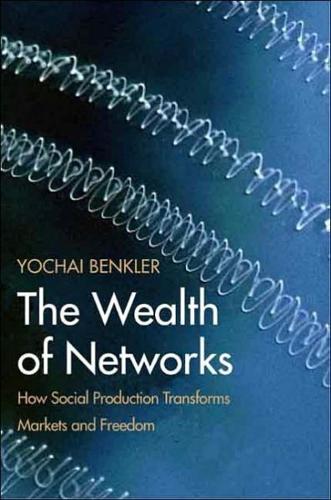
The Wealth of Networks: How Social Production Transforms Markets and Freedom
by
Yochai Benkler
Published 14 May 2006
These arguments were set out most clearly and early in a public exchange of letters between Representative Villanueva Nunez in Peru and Microsoft's representatives in that country. The exchange can be found on the Web site of the Open Source Initiative, ‹http://www.opensource.org/docs/peru_and_ms.php›. 113. A good regional study of the extent and details of educational deprivation is Mahbub ul Haq and Khadija ul Haq, Human Development in South Asia 1998: The Education Challenge (Islamabad, Pakistan: Human Development Center). 114. Robert Evenson and D. Gollin, eds., Crop Variety Improvement and Its Effect on Productivity: The Impact of International Agricultural Research (New York: CABI Pub., 2002); results summarized in Robert Evenson and D.
…
These arguments were set out most clearly and early in a public exchange of letters between Representative Villanueva Nunez in Peru and Microsoft's representatives in that country. The exchange can be found on the Web site of the Open Source Initiative, ‹http://www.opensource.org/docs/peru_and_ms.php›. 113. A good regional study of the extent and details of educational deprivation is Mahbub ul Haq and Khadija ul Haq, Human Development in South Asia 1998: The Education Challenge (Islamabad, Pakistan: Human Development Center). 114. Robert Evenson and D. Gollin, eds., Crop Variety Improvement and Its Effect on Productivity: The Impact of International Agricultural Research (New York: CABI Pub., 2002); results summarized in Robert Evenson and D.

Rogue States
by
Noam Chomsky
Published 9 Jul 2015
For his reflections on the East Asian crisis, see his WIDER Annual Lectures 2, UN University, 1997; “An Agenda for Development in the Twenty-First Century,” Annual World Bank Conference on Development Economics 1997, IBRD, 1998. 15. David Felix, “The Tobin Tax Proposal: Background, Issues, and Prospects,” Working Paper No. 191, Washington University, June 1994; see his and other papers in Mahbub Ul Haq, Inge Kaul, Isabelle Grunberg, The Tobin Tax: Coping with Financial Volatility (Oxford, 1996). 16. Argentine political scientist Atilio Boron, “Democracy or Neoliberalism?,” Boston Review, Oct.- Nov. 1996; see his State, Capitalism, and Democracy in Latin America (Lynne Rienner, 1996). 9. “Recovering Rights” This is excerpted from an address given at the Oxford Amnesty Lectures, “Globalizing Rights,” Feb. 9, 1999.

The Measure of Progress: Counting What Really Matters
by
Diane Coyle
Published 15 Apr 2025
The spirit of the exercise was to stay with the broad SNA framework. A well-established alternative index is the H uman Development Index (HDI), inspired by Amartya Sen’s capabilities approach (more on this later). In his account of the flaws of GDP, Ehsan Masood (2016) recounts that when approached by the founder of the HDI, Mahbub ul-Haq, Sen was reluctant to develop an indicator on the basis of the theory for exactly the reason that the capabilities approach conceives of human welfare as being multidimensional and context-specific. However, he agreed, so the HDI and accompanying report have become firmly established in the development policy world.
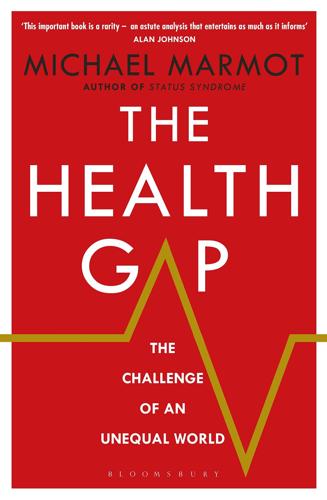
The Health Gap: The Challenge of an Unequal World
by
Michael Marmot
Published 9 Sep 2015
Even those who think everything was better before, and progressives wrecked everything, probably want ‘development’ in the sense of going back to a better time, whenever that was. I cannot muster too much enthusiasm for a rose-tinted past. The United Nations has a whole agency devoted to Development, the UNDP. I find their reports invaluable. Pioneered by Mahbub ul Haq, and influenced by Amartya Sen, UNDP recognises that development involves much more than economic growth. It uses a Human Development Index, HDI, that includes measures of national income, of education, and of life expectancy. Further, rather than divide the world into developed and developing it ranks countries on their HDI.

Age of Discovery: Navigating the Risks and Rewards of Our New Renaissance
by
Ian Goldin
and
Chris Kutarna
Published 23 May 2016
The spread of so many low-cost ideas to improve health and education means that wider human progress today depends more on how well countries exploit these ideas than on how fast incomes grow. If, instead of concentrating only on income, we look at life expectancy, years of schooling and income together—a combined statistic that its Pakistani creator, the late economist Mahbub ul Haq, dubbed the Human Development Index (HDI)—then by this measure virtually all countries for which data exists are better off since 1990, and poor countries are clearly converging upon the rich.¶ At present rates of progress, by 2050, more than three-quarters of humanity will attain the same score on the development index that the United Kingdom enjoys today.101 The biggest leaps are happening in countries we don’t talk nearly enough about—like Rwanda, which since 2008 has risen faster up the HDI—17 places—than any other country.102 * * * We see humanity’s potential more clearly now, because we suddenly stand so much closer to it.
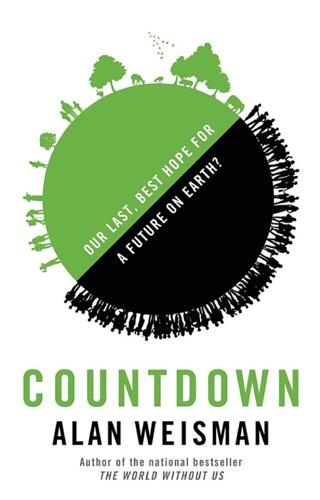
Countdown: Our Last, Best Hope for a Future on Earth?
by
Alan Weisman
Published 23 Sep 2013
The deluge of materialism confounded the image of Keralans enjoying dignified lives on very low incomes. Kerala’s progressive social development and miraculously low fertility had been frequently extolled by Nobel laureate economist Amartya Sen. In the 1990s, the “Kerala Model” became an inspiration for the UN’s Human Development Index that Sen developed with Pakistani economist Mahbub ul Haq—an alternative to GDP as the measure of healthy development. Kerala was cited repeatedly during formulation of the UN’s current Millennium Development Goals as a world-class example of gender equality, women’s empowerment, reduced maternal and child mortality, and universal health care and education.

The Ministry for the Future: A Novel
by
Kim Stanley Robinson
Published 5 Oct 2020
Criticisms of GDP are many, as it includes destructive activities as positive economic numbers, and excludes many kinds of negative externalities, as well as issues of health, social reproduction, citizen satisfaction, and so on. Alternative measures that compensate for these deficiencies include: the Genuine Progress Indicator, which uses twenty-six different variables to determine its single index number; the UN’s Human Development Index, developed by Pakistani economist Mahbub ul Haq in 1990, which combines life expectancy, education levels, and gross national income per capita (later the UN introduced the inequality-adjusted HDI); the UN’s Inclusive Wealth Report, which combines manufactured capital, human capital, natural capital, adjusted by factors including carbon emissions; the Happy Planet Index, created by the New Economic Forum, which combines well-being as reported by citizens, life expectancy, and inequality of outcomes, divided by ecological footprint (by this rubric the US scores 20.1 out of 100, and comes in 108th out of 140 countries rated); the Food Sustainability Index, formulated by Barilla Center for Food and Nutrition, which uses fifty-eight metrics to measure food security, welfare, and ecological sustainability; the Ecological Footprint, as developed by the Global Footprint Network, which estimates how much land it would take to sustainably support the lifestyle of a town or country, an amount always larger by considerable margins than the political entities being evaluated, except for Cuba and a few other countries; and Bhutan’s famous Gross National Happiness, which uses thirty-three metrics to measure the titular quality in quantitative terms.

Enlightenment Now: The Case for Reason, Science, Humanism, and Progress
by
Steven Pinker
Published 13 Feb 2018
The very fact that so many dimensions of well-being are correlated across countries and decades suggests there may be a coherent phenomenon lurking beneath them—what statisticians call a general factor, a principal component, or a hidden, latent, or intervening variable.43 We even have a name for that factor: progress. No one has calculated this vector of progress underlying all the dimensions of human flourishing, but the United Nations Development Programme, inspired by the economists Mahbub ul Haq and Amartya Sen, offers a Human Development Index that is a composite of three of the major ones: life expectancy, GDP per capita, and education (being healthy, wealthy, and wise).44 With this chapter we have now examined all of these goods, and it’s an appropriate point to step back and take in the history of quantifiable human progress before we turn to its more qualitative aspects in the next two chapters.